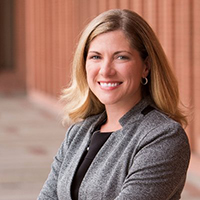Description | Team at USC | Funder
Description
Fieldwork, defined as extended learning or research experience outside the campus environment, lies at the core of geosciences. It can inspire student interest in the discipline, is a gatekeeping experience in many geoscience majors, and is a critical component for much of its research. Fieldwork, as one participant in this project put it, is “knowledge, inspiration, and adventure.” In collaboration with Co-PI’s in both the geosciences and social sciences around the country, FIELD is aimed at improving the design and leadership of field-based experiences in the geosciences toward inclusion of undergraduate and graduate students from diverse backgrounds (e.g., gender, race/ethnicity, socioeconomic status, disability status, sexuality).
As a Co-PI on the National Science Foundation-funded FIELD project, Posselt and her team are conducting ethnographic research of field-based experiences at the undergraduate and graduate levels. In summer 2017, this work included intensive participant observation of a longstanding five-week graduate-level field-based geosciences course, as well as a three-week field-based environmental studies course for undergraduates. These courses provide unique windows into the culture of teaching, learning, and research in the field, and reveal cultural dynamics of knowledge production and inclusion that will be used to inform the design of a leadership institute for geoscientists who facilitate field-based experiences.
For more information about the FIELD project, visit FIELD @ Berkeley and Geoscience Opportunities for Leadership in Diversity (GOLD).
Team at USC
Julie Posselt
Associate Professor and Principal Investigator
Past Team Members
Sarah Dobbs
Research Assistant and Visiting Undergraduate Researcher (Swarthmore College)
Deborah E. Southern
Research Assistant
Funder
 This webpage is based upon work supported by the National Science Foundation under grant No. ICER-1645456. Any opinions, findings, and conclusions or recommendations expressed in this material are those of the author(s) and do not necessarily reflect the views of the National Science Foundation.
This webpage is based upon work supported by the National Science Foundation under grant No. ICER-1645456. Any opinions, findings, and conclusions or recommendations expressed in this material are those of the author(s) and do not necessarily reflect the views of the National Science Foundation.
